Oki Islands
Oki Islands are beautiful islands in Shimane Prefecture that looks like they are not islands in the Sea of Japan, even though they are islands in the Sea of Japan.
Oki Islands consists of 4 manned islands and 180 unmanned islands that are located in the Sea of Japan, northeast of Shimane Prefecture. It is located approximately 40 to 80 km offshore of Shimane Peninsula. Of the four inhabited islands, Chiburijima Island (belonging to Chibu Village), Nakanoshima Island (belonging to Ama Town), Nishinoshima Island (belonging to Nishinoshima Town) are called as Dozen Islands and the largest island (belonging to Okinoshima Town) of Oki Islands are called as Dougo Island. Also, the Oki Islands are generally called Oki Island.
Access to the Oki Islands
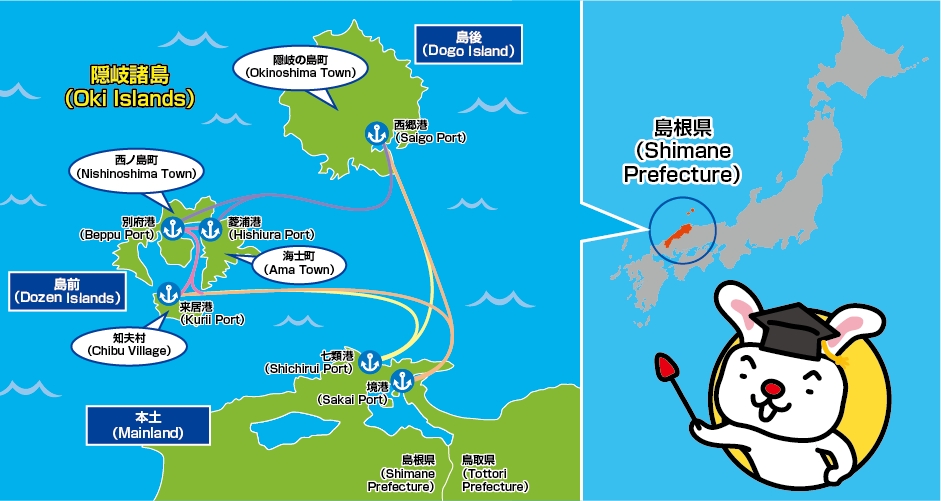
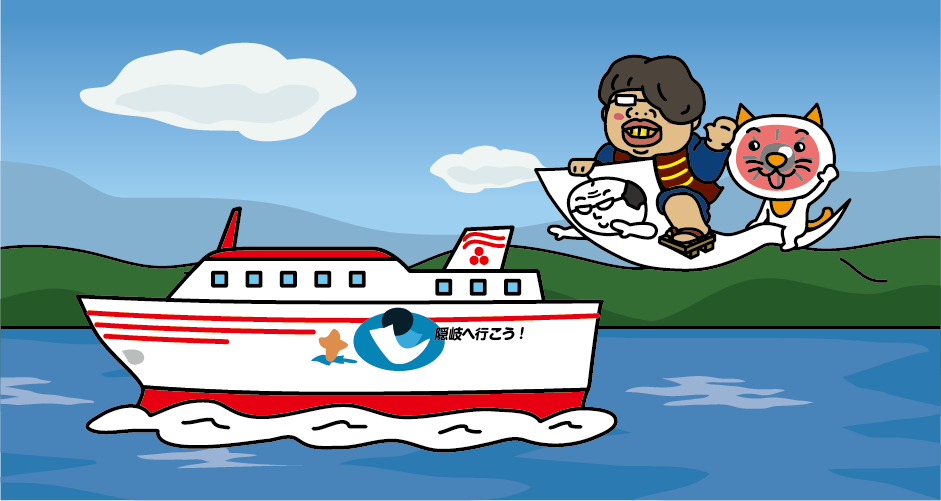
If you want to visit Oki Islands, you can travel with the ferries of OKI KISEN that depart from Shichirui Port (Shimane Prefecture) and Sakaiminato Port (Tottori Prefecture). Oki Island (Dogo Island) is an island where the family roots of Shigeru Mizuki, a manga artist known for his “GeGeGe no Kitaro” series, are said to have originated in, and the “Kitaro Ferry” that is painted with pictures of characters from “GeGeGe no Kitaro” is operated under the Project for Expanding “Mizuki Shigeru Road” in Sakaiminato City, Tottori Prefecture. On Oki Island (Dogo Island), there are many statues related to Shigeru Mizuki, such as statues of cartoonized Shigeru Mizuki, Kitaro and several Yokai characters.
Oki Island in Japanese mythology
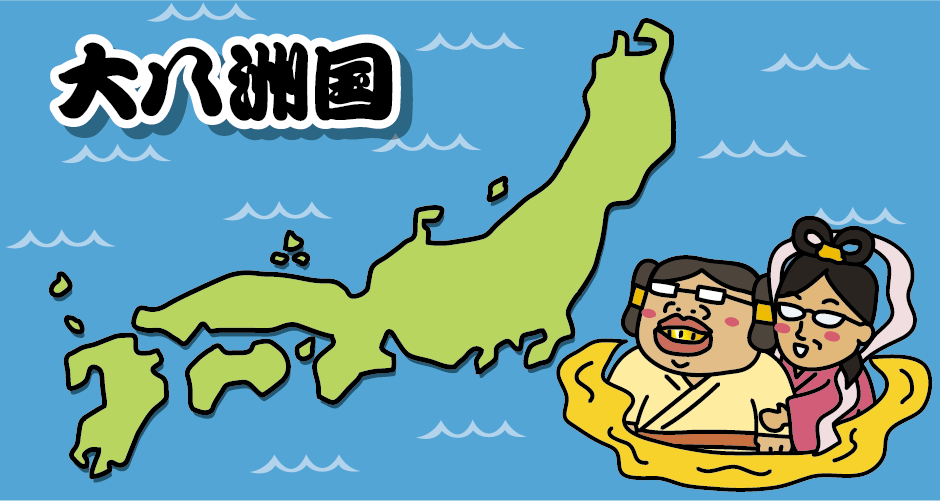
Oki Island has a very long history. In Japanese mythology, Japan was called as “Yashima” and in Kojiki, Yashima is defined as a generic name of “eight island (eight country)” of Honshu, Kyushu, Shikoku, Awaji Island, Iki Island, Tsushima Island, Oki Island and Sado Island. Oki Island has been an important island and also an important country that has made up Yashima since ancient time. Additionally, since Oki Island has been a place of exile for nobles and aristocrats, it has rich culture.
Chiburijima Island
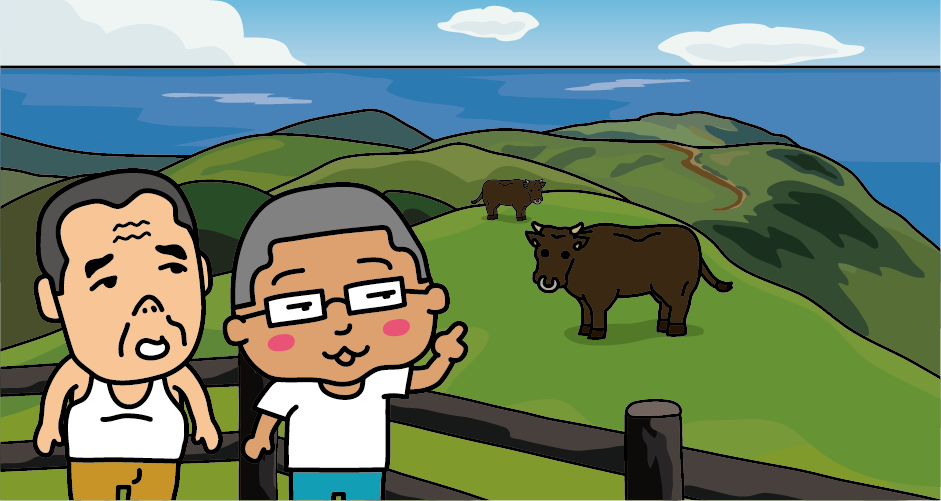
The highest mountain in “Chiburijima” is Mt. Akahage. You can see 360-degree view of the Sea of Japan, the islands of Oki, and the bay of caldera from Mt. Akahage Lookout on top of the mountain. Mt. Akahage Lookout is an only observatory in Oki Island you can overlook the four islands of Douzen and Dougo together. Also, many cows are put to pasture in Mt. Akahage.
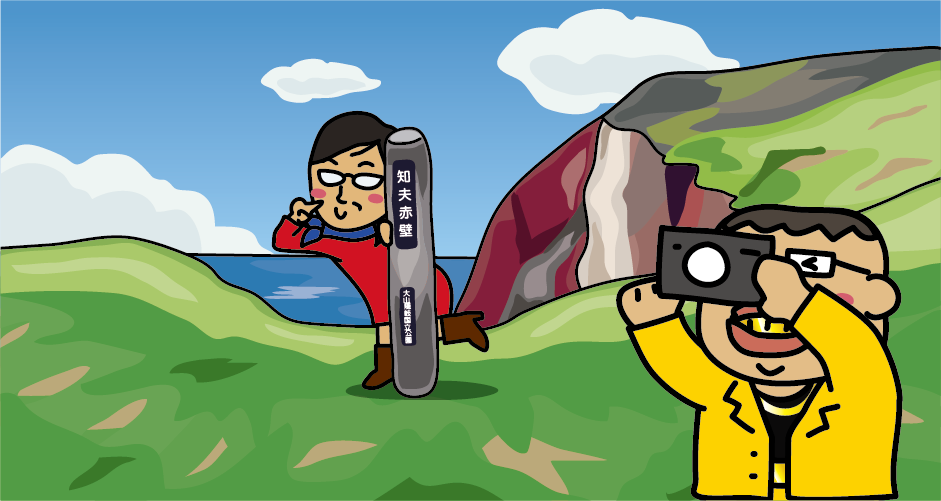
On the west coast of “Chiburijima”, you can see about 1km length of bright colored cliff such as red, yellow and brown and their height are 50m to 200m. This is designated as a natural monument of the country and known as the scenic spot “Akakabe”, a sea-cliff composed of red rock. You can see it from the lookout as well as from the sightseeing boat.
Nakanoshima Island
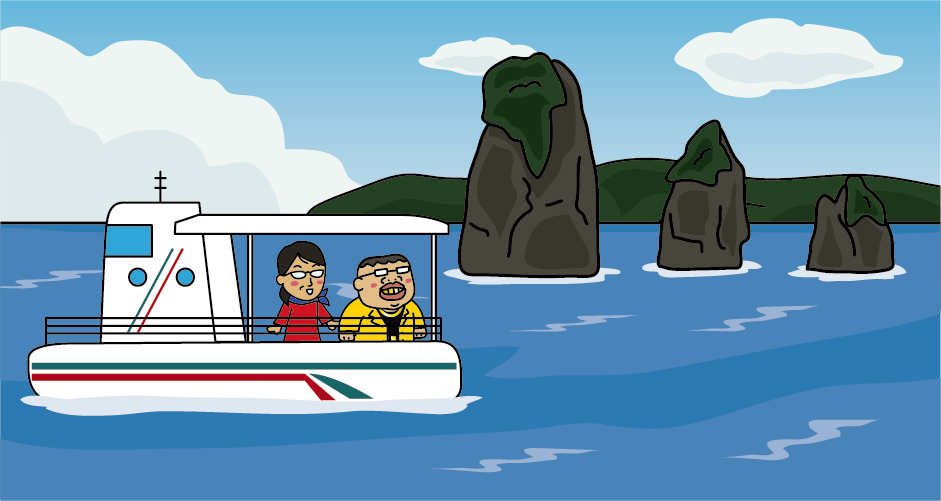
The underwater viewing boat “AMANBOW” operates from Hishiura Port Ferry Terminal on “Nakanoshima”. After leaving the port for a while, Saburo-iwa rocks will appear. They are called as Taro, Jiro, Saburo from the big rock to small rock.
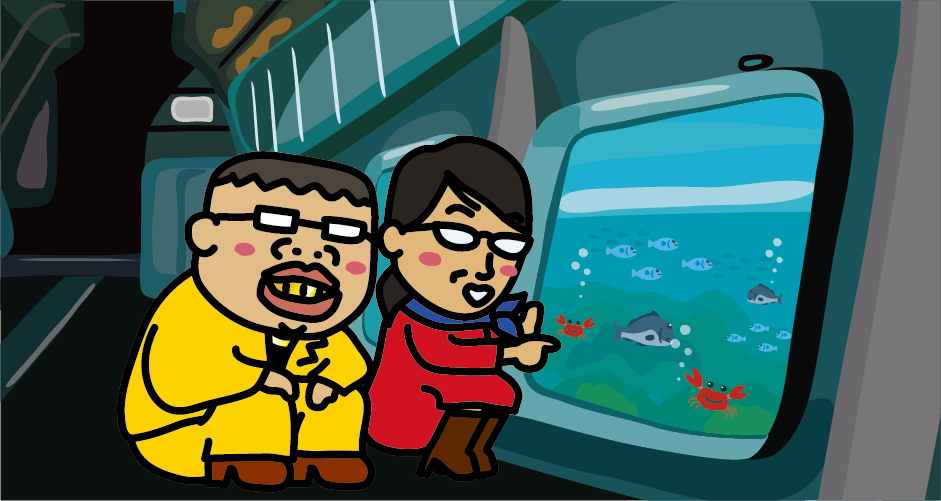
Near Saburo-iwa rocks, you can get down to the bottom of “AMANBOW” and observe a school of fish swimming in the sea from the underwater observation seat. This is 50 minutes of round-trip from Hishiura Port Ferry Terminal to Saburo-iwa rocks.
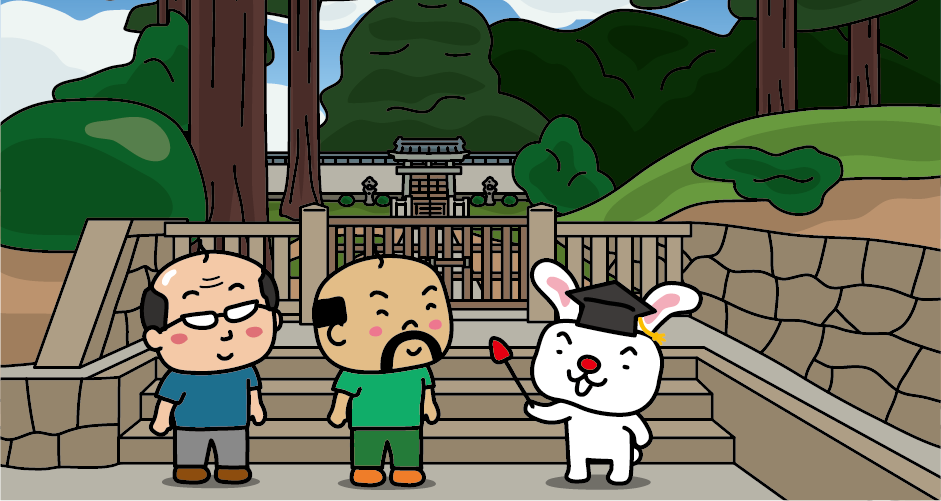
After being exiled to Oki Island by Jokyu War of 1221, Emperor Gotoba has passed away at the age of 60 in 1240. It was 19 years after his exile. There is “Emperor Gotoba Burial Ground” managed by Imperial Household Agency. There is a museum relating to Emperor Gotoba nearby.
Nishinoshima Island
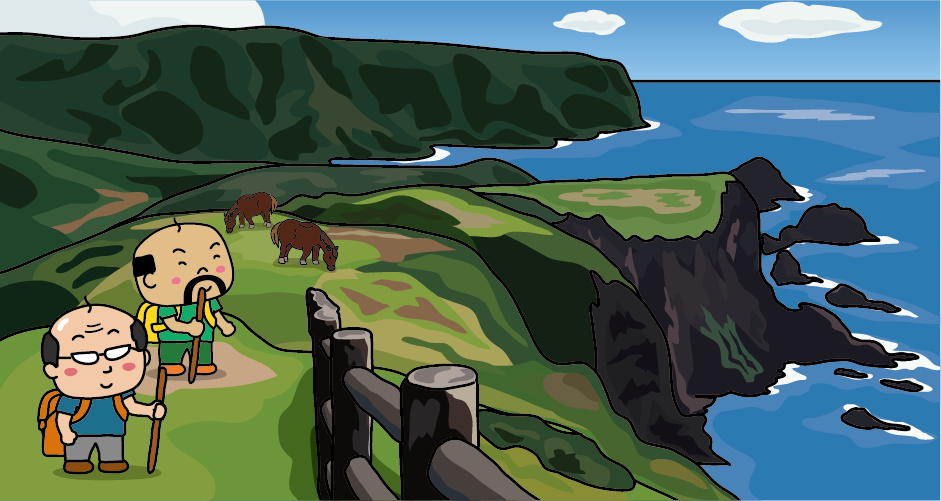
“Kuniga Coast”, located in the northwestern part of “Nishinoshima” is a scenic spot representing Oki Island, where large sea cliffs continue for about 13km and many strangely shaped rocks can be seen. The steep cliff called “Matengai Cliff” which height is 257m, is one of Japan’s largest sea cliffs. It is also designated as a scenic spot and a natural monument of the country. The top of the cliff is pasture where cows and horses eat grasses leisurely.

If you want to enjoy the magnificent scenery of Kuniga Coast, I will recommend “Matengai Cliff Promenade” from Matengai Cliff to Kuniga Beach. This is a promenade with 2.3 km length and there are 250m of height difference. The journey takes about 60 minutes one way. You can go down pasture, go through crowds of cows and horses, along the way down the grassland, you can get the whole view of Matengai Cliff and the arched rock called “Tsutenkyo”.
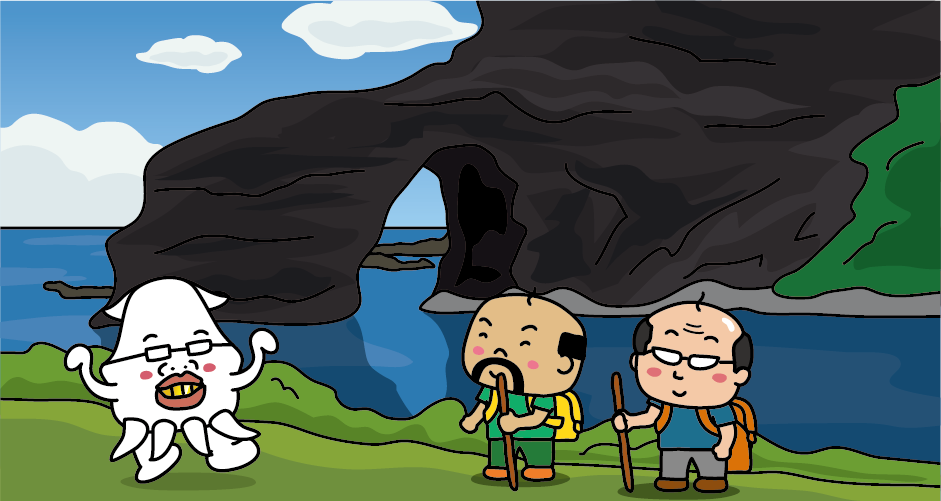
“Tsutenkyo Arch” is a rock arch created by the rough seas of the Sea of Japan. The central part of the rock has been hollowed out by sea erosion. You can also see it from a sightseeing boat.
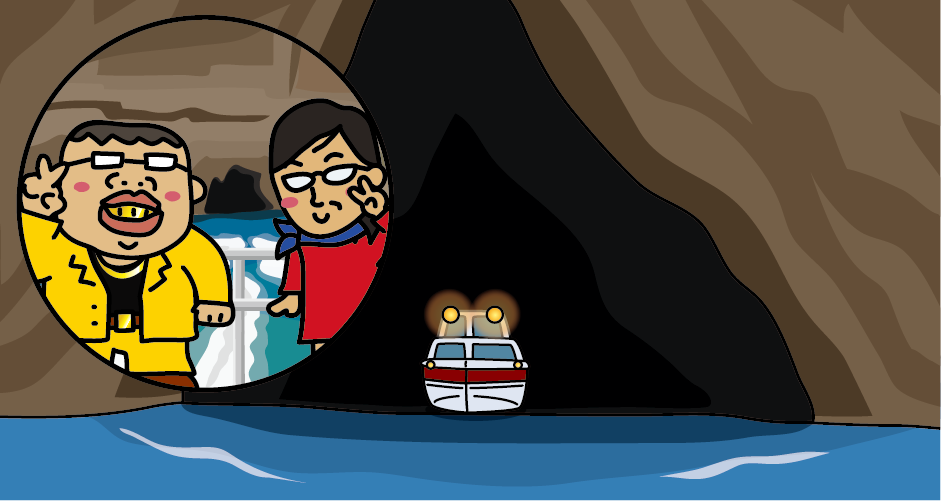
A sea cave called “Akekure no Iwaya” in Kuniga Coast is a 250ml length of natural tunnel created by nature. You can go through by a sightseeing boat, but the entrance of the cave is almost same width as a sightseeing boat, so sometimes you cannot go through depending on the condition of the winds and waves.
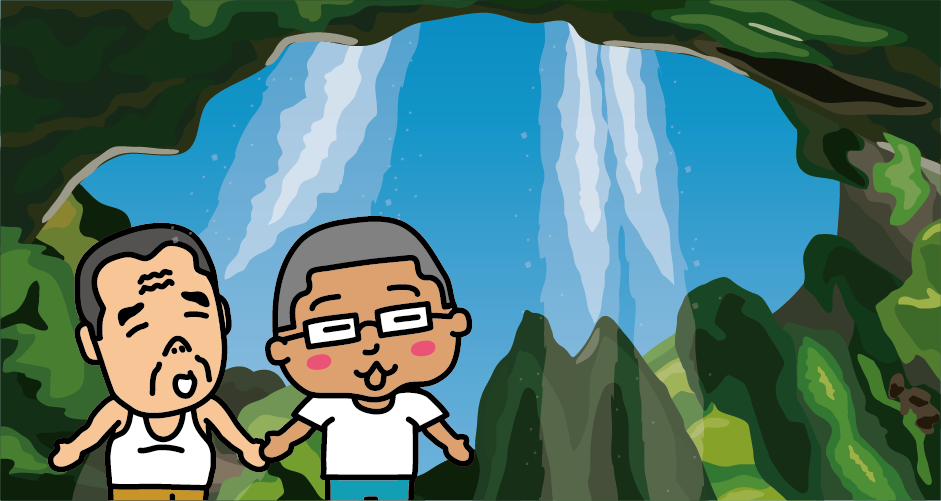
In Dougo, there is “Dangyo-no-taki waterfall” which has been selected as one of “Japan’s top 100 waterfalls” and “The 100 most excellent natural water sources in Japan”. There is Dangyo Shrine on the wall like a folding screen, and there are two waterfalls with 40m height on both side of Dangyo Shrine. On the right side is Odaki (the bigger and stronger waterfall) and the left side is Medaki (the smaller and weaker waterfall). This is that you can see the waterfall from the backside of Odaki by going through the side of the main shrine.
Dougo Island
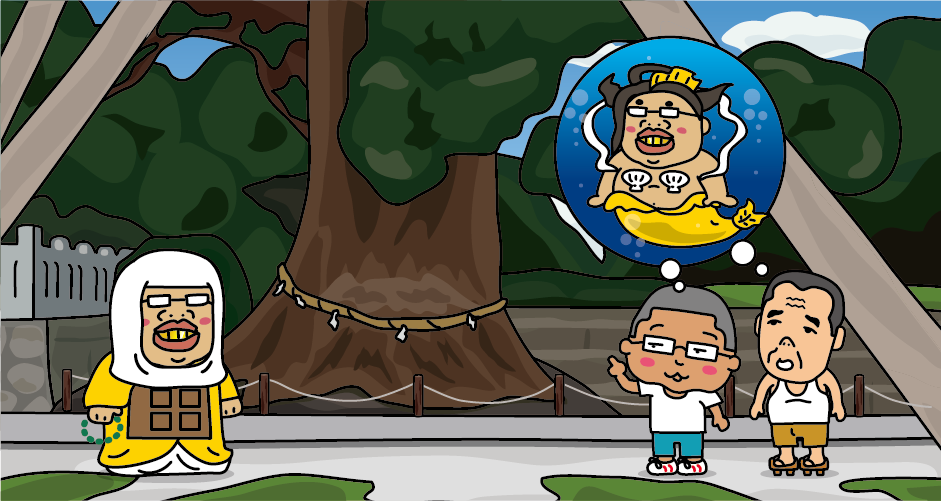
There is the largest Japanese cedar in Shimane Prefecture at Tamawakasu-mikoto Shrine in Dougo. It is said that the tree height is 30m, root length is about 20m and the age is over 2000 years. This is also designated as a natural monument of Japan. A long time ago, a nun from the country of Wakasa (current Fukui Prefecture) planted a Japanese cedar to commemorate her visit and promised her revisit 800 years later, so it is called Yaosugi (800 Japanese cedar).
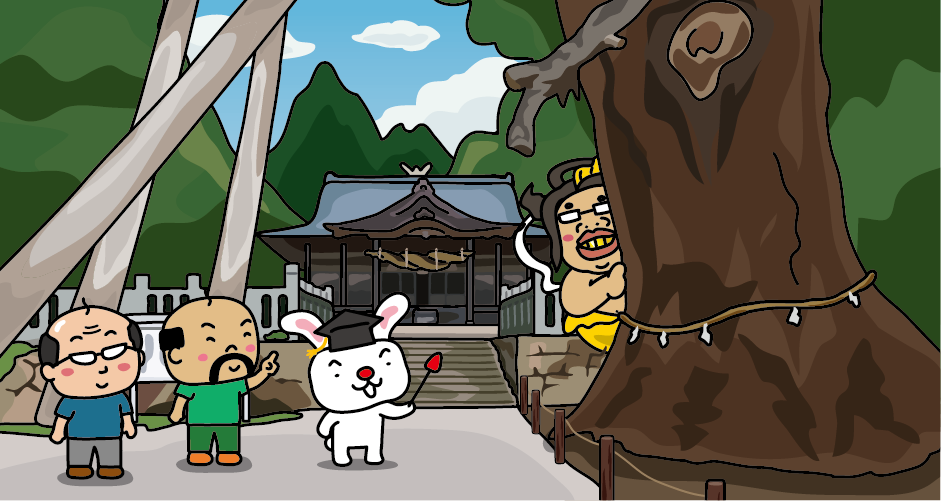
The main shrine of “Tamawakasu-mikoto Shrine” and “Mizuwakasu Shrine” which is also located in Dogo are built in the unique architectural style of Oki island called “Traditional Oki Architecture”. This is designated as an important cultural asset of Japan. This architecture style can be divided into two types, shrine construction and residential construction.
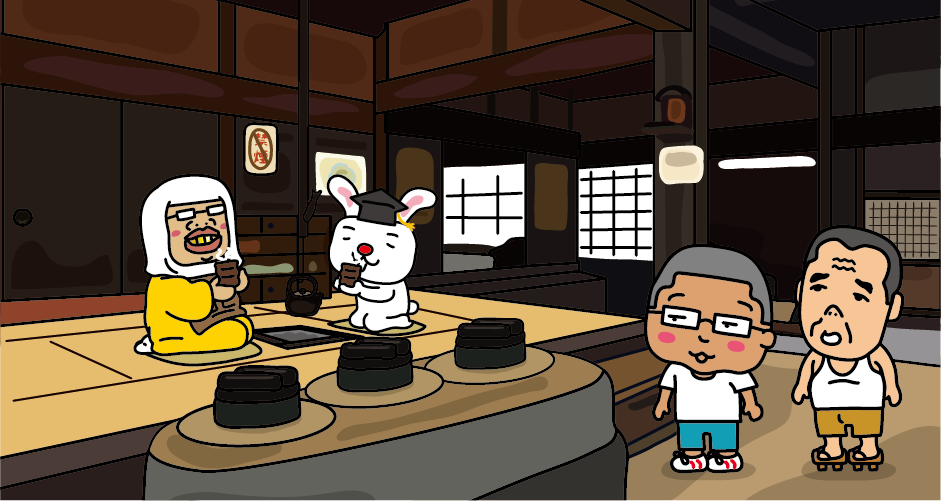
Sasaki family house in Dougo is a typical wooden house of “Traditional Oki Architecture”. It is roofed with pine barks and stones are placed. The biggest feature is that there are three entrances that can be used according to the difference of social states and purpose. You can see the inside of the building and exhibits. It is designated as an important cultural asset of Japan.
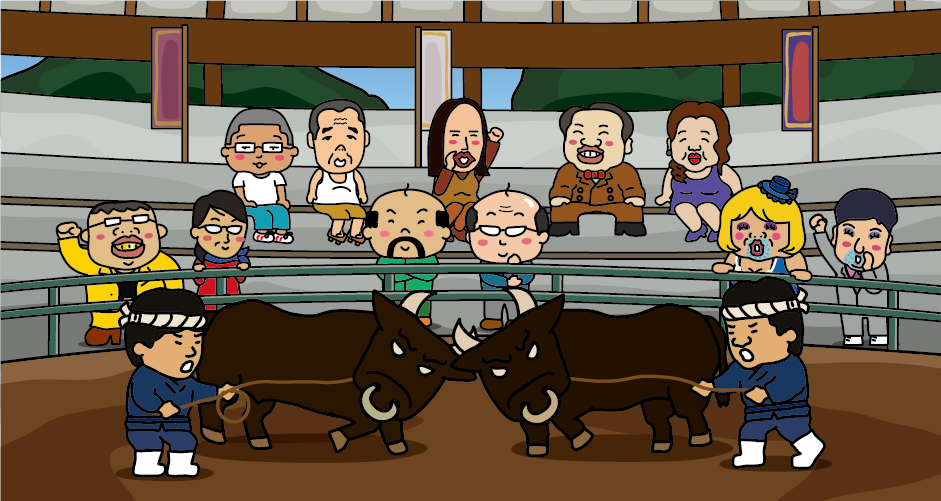
The bullfighting which takes place on Oki island is called “Ushitsuki (Oki Bull Sumo)” and it has a history of 800 years. It is said that the origin of this event is people of island started it to comfort Emperor Gotoba who exiled to Oki Island in 1221. In addition to the annual festival at Dangyo Shrine which held in every September, the regular tournament take place until one of the cows escape from the tournament. The regular tournament will be held three times a year. Also, Bull Sumo for tourists are held regularly at “Oki Momo Dome”. Bull Sumo for tourists will always end in a draw.
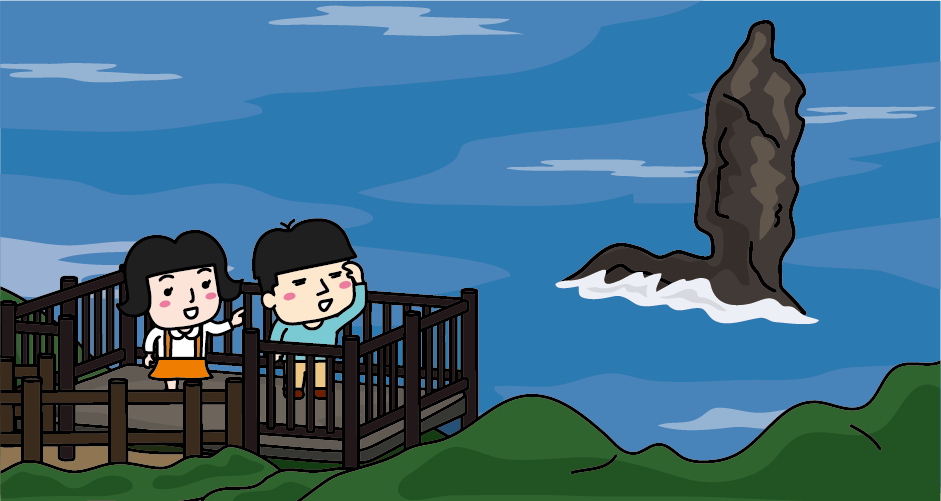
There is 20m height of strangely shaped rock called “Rosoku jima (candle island)” near the northwest of Dogo. When the sunset is overlapped with the top of the island, it looks like a huge candle with burring fire. You can see Rosoku jima from “Rosoku jima Lookout Point”, but you can only see the scenery of the candle alight with fire from a sightseeing boat.
Access to Oki Islands
[Railway]
It takes about 50 minutes from JR Shin-Osaka Station to JR Okayama Station by Sanyo Shinkansen. From JR Okayama Station, transfer to the JR Sanyo Main Line and take a limited express train to JR Yonago Station, it takes about 2 hours and 20 minutes. Transfer to the JR Sakai Line at JR Yonago Station and it takes about 45 minutes to get to JR Sakaiminato.
- Shichirui Port
Approx. 15 minutes from JR Sakaiminato Station to Shichirui Port (Oki Kisen Ferry Terminal) by shuttle bus. It takes about 2 hours and 30 minutes by ferry from Shichirui Port to Oki Island (Dougo/Saigo Port). It takes about 1 hour and 30 minutes by high-speed boat.
- Sakai Port
Approx. 1 minute-walk from JR Sakaiminato Station to Sakaiminato (Oki Kisen Ferry Terminal). It takes about 2 hours and 30 minutes from Sakai Port to Oki Island (Dougo, Saigo Port) by ferry. It takes about 1 hour and 30 minutes by high-speed boat.
[Airplane]
Approx. 50 min from Itami Airport to Oki Airport (1 flight per day)
Approx. 30 min from Izumo Airport to Oki Airport (1 flight per day)

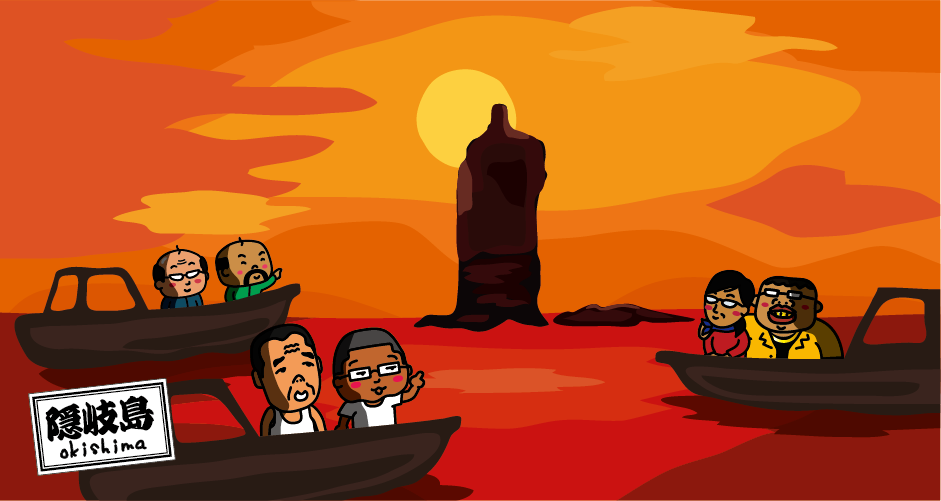


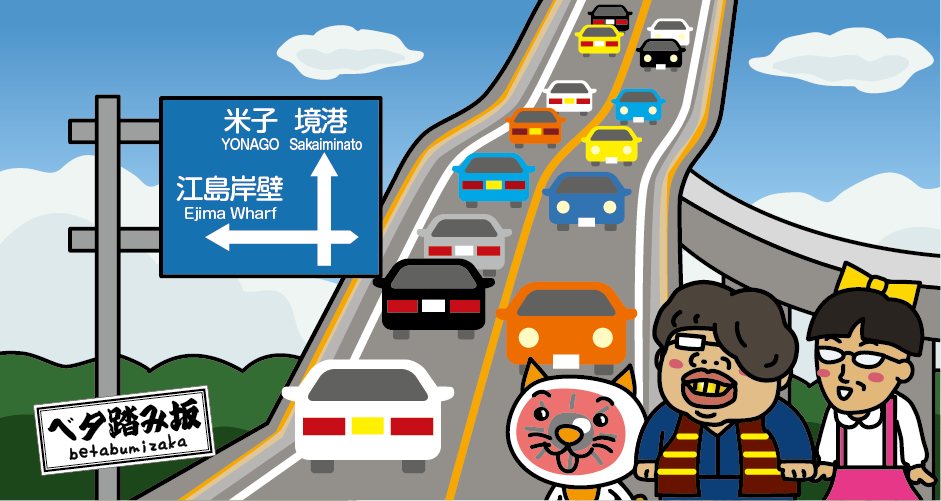
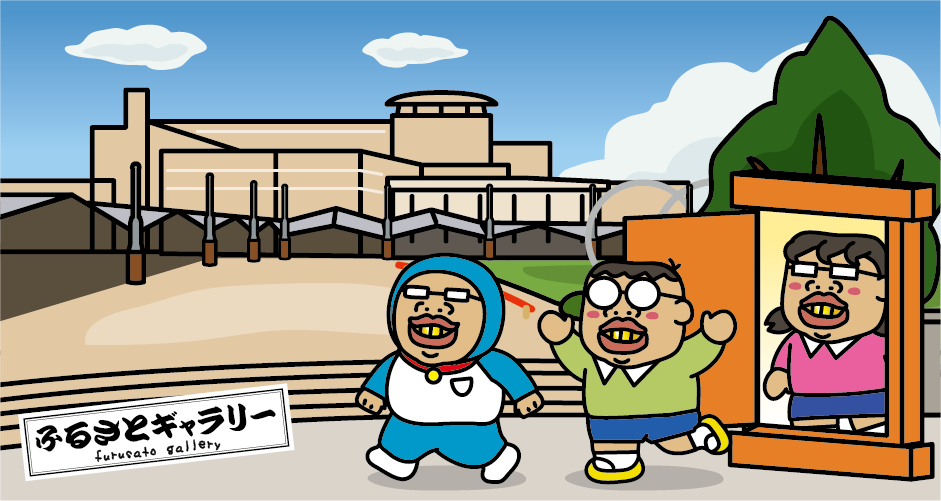
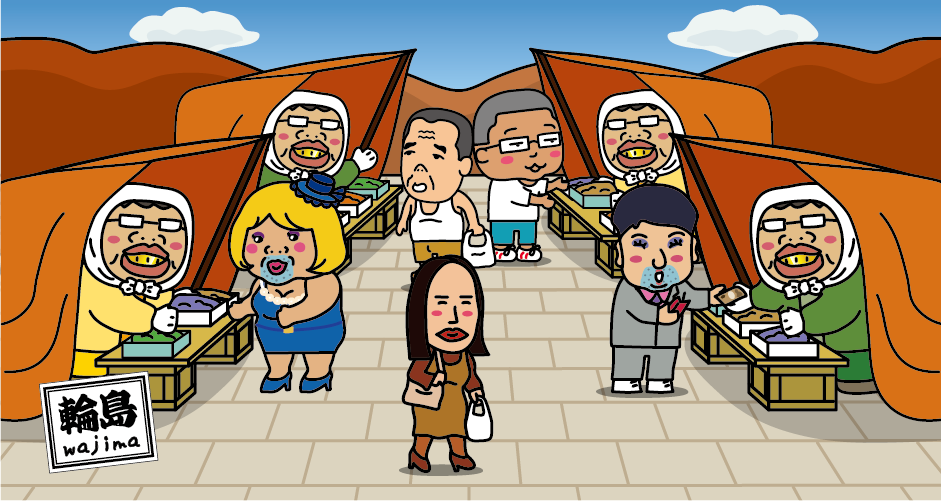

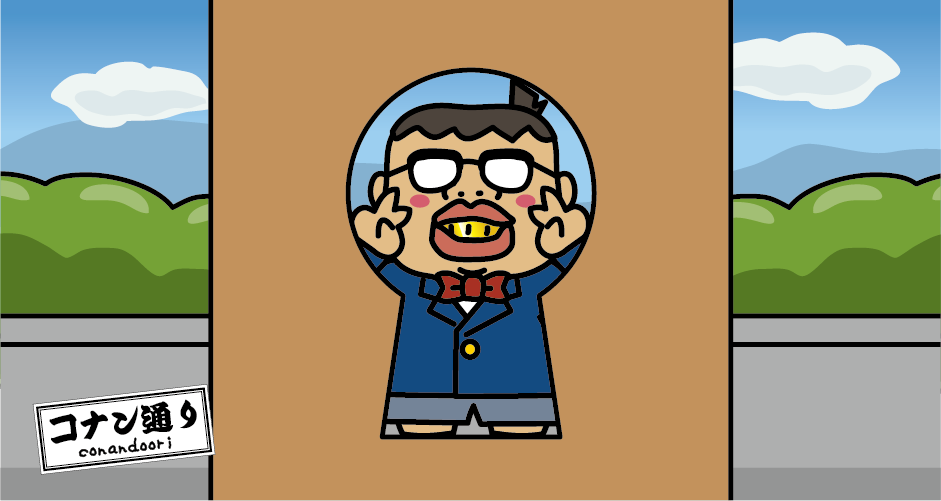
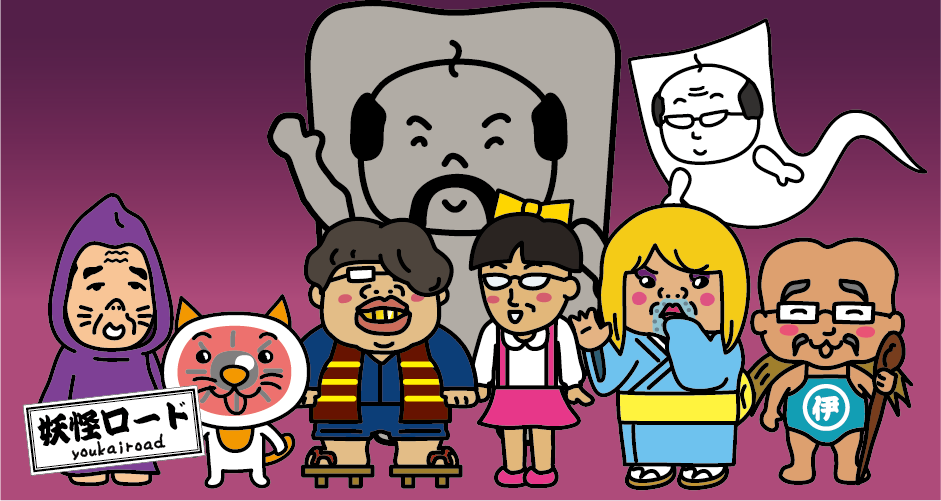

You need to login to comment on an article.